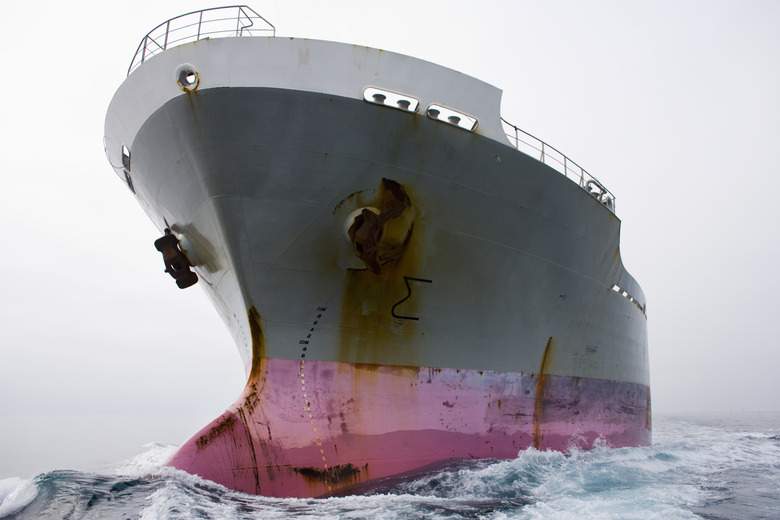Fun Archimedes Principle Experiments
"Oasis of the Seas" is the world's largest cruise ship with a mass of 100,000 tons, yet it floats. Ship designers utilize Archimedes' principle, which states that in order for a boat to float it must displace an equal volume of water more than its own weight. This complex concept is made more accessible to students through the use of interesting demonstrations and experiments like the ones described below.
How It All Started
How It All Started
In ancient Greece, King Hiero II commissioned a crown to be made by a local goldsmith. He doubted that it was pure gold, so he gave philosopher-scientist Archimedes the task of finding out. Archimedes stepped into a warm bath and saw water spill over the side as he sank into the tub and realized the water displaced was equal to his body's volume.
"Eureka!" he exclaimed when he determined that he could use this technique of displacement to calculate the volume and density of the crown. His test proved the crown's density was less than gold, thus the crown was not pure gold.
Ball Versus Hull
Ball Versus Hull
When asked why an aluminum cylinder sinks, a student may incorrectly answer, "Because it weighs more."
Give students two pieces of 5-inch-by-5-inch aluminum foil. Find the mass of both. Ask students to crunch one square of foil into a tight ball, drop it into the water and watch it sink. Experiment with the second square until you find a way to make the aluminum float.
When the aluminum is shaped like a boat it will float because the volume has greatly increased while the mass has stayed the same. The hull of the boat is filled with air, increasing the volume without adding significant weight. The boat will float if the mass of the boat is less than the water it displaces. With a hollow hull, the boat will displace more water than the ball.
Hovering Helium Balloon
Hovering Helium Balloon
The force of gravity depends on the mass of the object to pull it down through a fluid. As the object starts to sink, buoyant force acts to push the object up. If gravitational force is greater than buoyant force, the object will sink. Helium balloons float in air because the mass of the air they displace is greater than mass of the helium and balloon.
Tie a ribbon to a helium balloon and it will float because the buoyant force is greater than gravitational force. Increase the force of gravity by increasing the weight. Tie pretzels to the ribbon, increasing the weight until the balloon sinks. Now nibble little pieces of the pretzel until the balloon slowly starts to rise. If you can get the balloon to "hover," gravitational force is equal to the buoyant force.
Archimedes Experiments
Archimedes Experiments
Using Archimedes' principle, students can determine if an object will sink or float in different fluids.
Prepare a clear glass with warm water. Add a grape and it will sink. Add salt to the glass and the grape begins to float. Remember Archimedes' principle: If an object weighs more than its own volume in fluid, it will sink. Adding salt to the water will increase the mass per unit volume until it is equal or more dense than the grape. At this time the grape will float.
You can also invite students to come up with clever ideas about oddly shaped objects that may or may not float, and describe how they could be used.
Cite This Article
MLA
VanBuren, Jennifer. "Fun Archimedes Principle Experiments" sciencing.com, https://www.sciencing.com/fun-archimedes-principle-experiments-15480/. 9 November 2019.
APA
VanBuren, Jennifer. (2019, November 9). Fun Archimedes Principle Experiments. sciencing.com. Retrieved from https://www.sciencing.com/fun-archimedes-principle-experiments-15480/
Chicago
VanBuren, Jennifer. Fun Archimedes Principle Experiments last modified March 24, 2022. https://www.sciencing.com/fun-archimedes-principle-experiments-15480/

